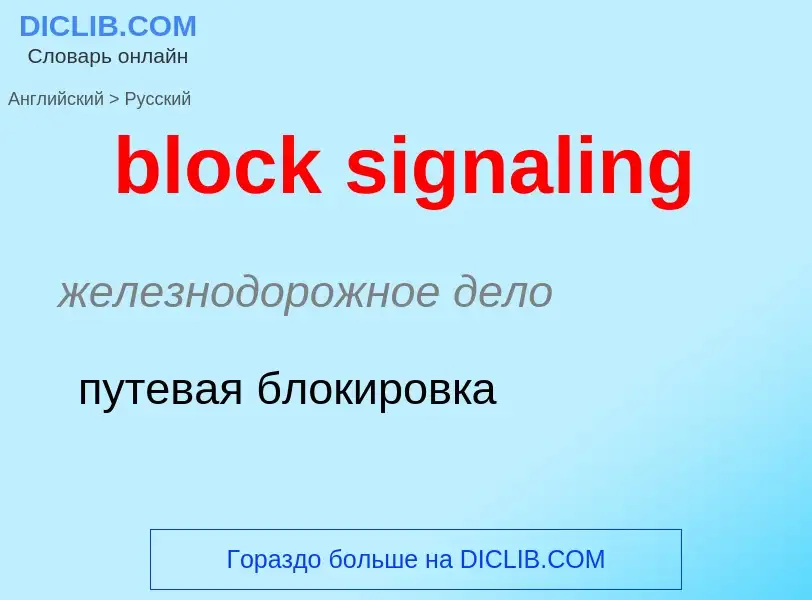Vertaling en analyse van woorden door kunstmatige intelligentie ChatGPT
Op deze pagina kunt u een gedetailleerde analyse krijgen van een woord of zin, geproduceerd met behulp van de beste kunstmatige intelligentietechnologie tot nu toe:
- hoe het woord wordt gebruikt
- gebruiksfrequentie
- het wordt vaker gebruikt in mondelinge of schriftelijke toespraken
- opties voor woordvertaling
- Gebruiksvoorbeelden (meerdere zinnen met vertaling)
- etymologie
block signaling - vertaling naar russisch
железнодорожное дело
путевая блокировка
['blɔk'sign(ə)l]
железнодорожное дело
блокировочный сигнал
Definitie
Wikipedia

Railway signalling (BE), also called railroad signaling (AE), is a system used to control the movement of railway traffic. Trains move on fixed rails, making them uniquely susceptible to collision. This susceptibility is exacerbated by the enormous weight and inertia of a train, which makes it difficult to quickly stop when encountering an obstacle. In the UK, the Regulation of Railways Act 1889 introduced a series of requirements on matters such as the implementation of interlocked block signalling and other safety measures as a direct result of the Armagh rail disaster in that year.
Most forms of train control involve movement authority being passed from those responsible for each section of a rail network (e.g. a signalman or stationmaster) to the train crew. The set of rules and the physical equipment used to accomplish this determine what is known as the method of working (UK), method of operation (US) or safeworking (Aus.). Not all these methods require the use of physical signals, and some systems are specific to single track railways.
The earliest rail cars were hauled by horses or mules. A mounted flagman on a horse preceded some early trains. Hand and arm signals were used to direct the "train drivers". Foggy and poor-visibility conditions later gave rise to flags and lanterns. Wayside signalling dates back as far as 1832, and used elevated flags or balls that could be seen from afar.


![Vertical colour light signal on the [[Enshū Railway Line]], Japan Vertical colour light signal on the [[Enshū Railway Line]], Japan](https://commons.wikimedia.org/wiki/Special:FilePath/Distant signal Hamamatsu.jpg?width=200)
![Traditional mechanical signals on display at a railway station in [[Steinfurt]], Germany Traditional mechanical signals on display at a railway station in [[Steinfurt]], Germany](https://commons.wikimedia.org/wiki/Special:FilePath/Railway signal set exhibited in Steinfurt.jpg?width=200)


